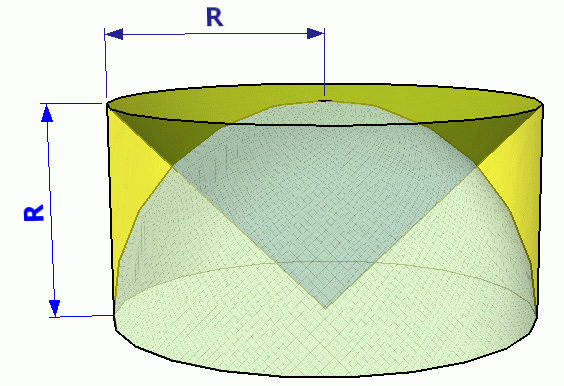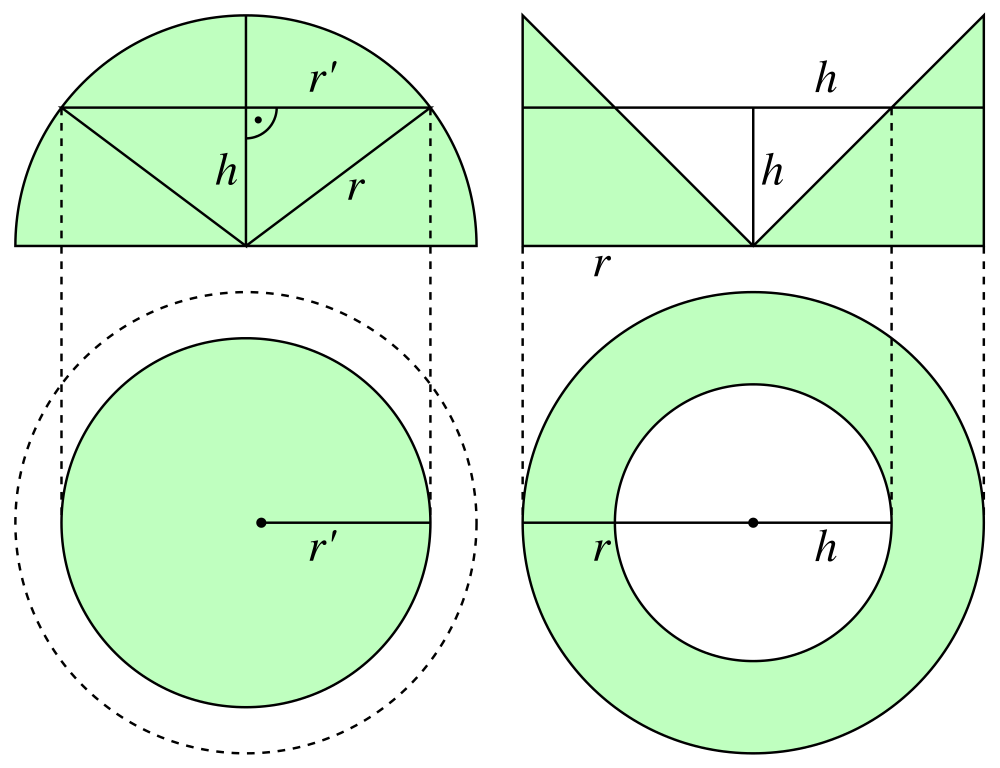This is the third and final post on the volume of a sphere. The other two can be accessed by the following links, “Coordinates in 3-Space” and “The Volume of a Sphere with Calculus” As the title suggests, this will be a derivation without the use of Calculus. This proof is Greek in origin, in particular it comes from a book written by Archimedes called “On the Sphere and Cylinder.” But the method of exhaustion which Archimedes used to prove the volume was later refined to Cavalieri’s Principle.
Theorem: Suppose two regions in 3-space (solids) are included between two parallel planes. If every plane parallel to these two planes intersects both regions in cross -section of equal area, then the two regions have equal volumes.
Okay, so suppose we have hemisphere of radius . Suppose also that we have a cylinder of height and radius
. Finally suppose we cut a cone of height and radius
from the cylinder and call the resulting shape
..

Consider a cross-section of at height
. The result is a “washer” with inner radius
and full radius of say,
. Hence we can compute its area by
.Then if we consider the cross-section at the same height we have a radius of
. However by looking at the following picture,

We see that in fact the Pythagorean Theorem tells us . Therefore the area is
. By applying Cavalieri’s Principle we see that the volume of a hemisphere is the volume of cylinder minus the volume of a cone. Or
. Finally, we conclude the volume of a full sphere is
.
thanks
LikeLike
very good job
LikeLike
much better than the description here:
http://mathcentral.uregina.ca/QQ/database/QQ.09.01/rahul1.html
your graphics really help
LikeLike